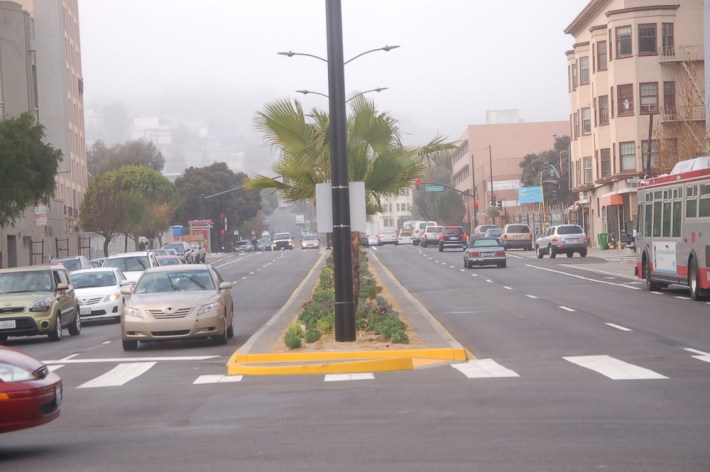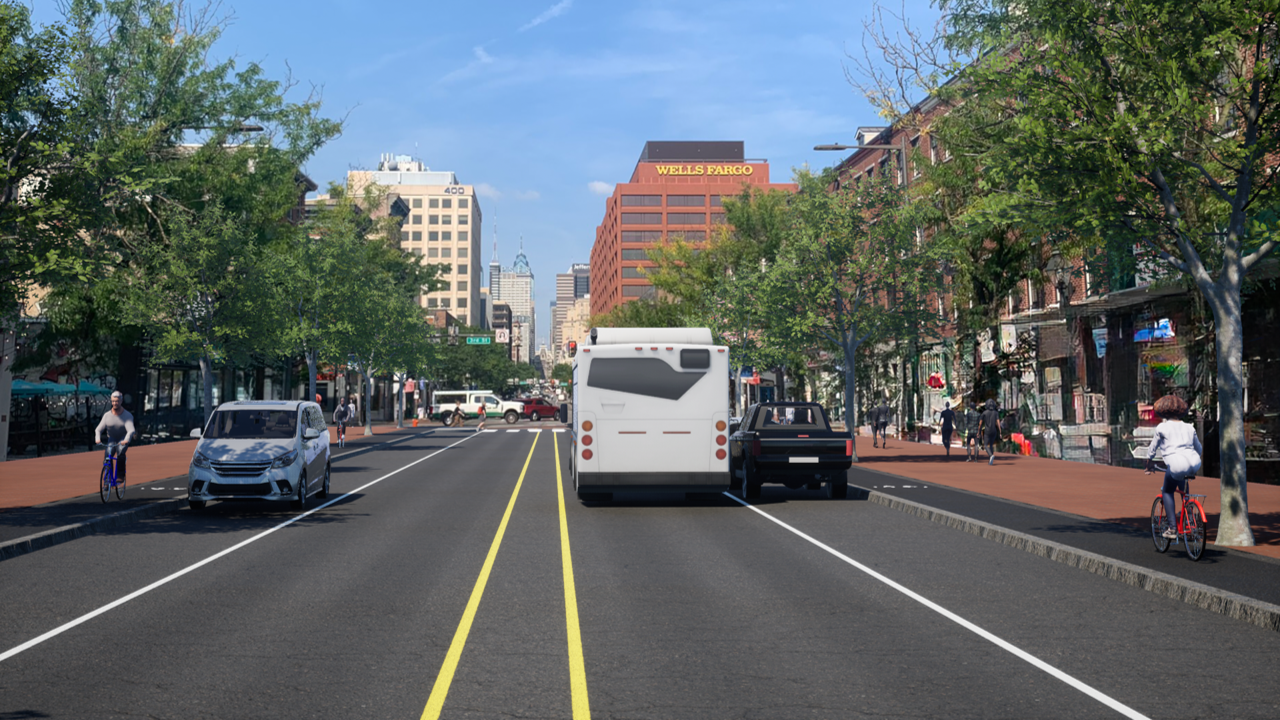
Any doubts that most of San Francisco's public space is consumed by private automobiles, whether moving or stored, could probably be put to rest with a quick glance at the city's car-dominated streets. But a new study pulls together some eye-opening numbers about just how unbalanced SF's priorities have been in allocating street space, prioritizing cars over people, and in charging drivers little relative to the costs they incur.
Here are some of the highlights from the San Francisco Modal Equity Study [PDF], published by the Transportation Choices for Sustainable Communities Research and Policy Institute:
- Parking lanes in San Francisco constitute 15 percent of the paved roadway area, equal to real estate valued between $8 and $35 billion.
- Street parking in San Francisco totals 902 miles in length, six times longer than the 143 miles of bike lanes.
- 75 percent of all bike lane miles were built since 2000.
- Bicycling constitutes four percent of trips, but only 1.4 percent of roadway space is dedicated to bicycle lanes.
- There are 36 lane miles of dedicated transit lanes, but 211 lanes miles of freeway lanes.
- General tax revenues, not user fees, pay 75 percent of roadway maintenance costs in San Francisco.
- The federal gas tax, in inflation-adjusted dollars, is at its lowest point since 1983, when the Reagan administration doubled it.
The parking count figures came from an SFMTA census report published in May, which showed that SF's 275,450 on-street parking spaces are enough to parallel-park a line of cars 60 miles longer than California’s entire 840-mile coastline. Ninety percent of those spaces are free at all times. In total, SF has 441,950 publicly-accessible car parking spaces. Private parking spaces, like those in residential garages, haven't been counted at all.
The report provides some perspective for those who say "restoring transportation balance" in SF means giving even greater priority to cars, enshrining free parking, and building even more parking garages. That backwards view has spawned Proposition L, which will go before voters in tomorrow's election.
This new report has some useful stats to counter misconceptions commonly thrown around in discussions about streets. You've heard this before: Bicyclists don't pay enough for the construction of bike lanes, right? In reality, most of the costs of our streets -- bike lanes, parking lanes, traffic lanes, and all -- are covered by the general public, and to a greater extent than in prior decades. Yet people who use the streets but don't drive impose lower costs, which saves the public money.
Denmark estimated that every kilometer cycled in the city earns the public a net €.23, largely through savings in health care costs, according to Mikael Colville-Andersen of Copenhagenize. Every kilometer driven, on the other hand, costs the country an estimated €.16. No similar study has been done in SF yet.
The SF Department of Public Health has, however, begun to quantify the costs of traffic violence. Pedestrian injuries in the city cost $15 million per year in medical treatment alone and comprise a quarter of all traumatic injuries, according to a 2011 DPH report. The average price of admitting an injured pedestrian to the hospital is nearly $80,000, and 76 percent of that is paid for with public funds. As the Modal Equity Study notes, SPUR estimated in 2005 that the externalized costs of crashes, in the form of health care costs and increased insurance premiums for other drivers, is $0.15 to $0.33 per mile driven.
Yet the funding measures being pursued in SF would only increase the share of the tab for city streets picked up by general taxpayers, whether they drive or not. Proposition A, the first of two proposed $500 million general obligation bonds being pushed by Mayor Ed Lee, would devote bond revenue that comes from property taxes to transportation.
A measure to increase the local vehicle license fee was originally supposed to be on tomorrow's ballot, restoring it from 0.65 percent to 2 percent of a car’s value -- the rate it was at for about 50 years before Governor Arnold Schwarzenegger slashed it. But Mayor Lee abandoned his support for even that modest measure. Supervisor Scott Wiener proposed Prop B as a backup measure to increase desperately-needed funding for transit, bike and pedestrian improvements, and pavement maintenance by allocating more general funds for those purposes.
There's still more to be quantified in examining our motorized streets. The study recommends deeper analysis of the externalized costs of driving, the disparity between who uses and who pays for streets, and a neighborhood-level analysis of autos' costs.
A few more externalized costs that could be quantified: Who pays for the network of traffic signals (over $400,000 apiece, according to an SF traffic engineer), which give motor vehicles carte blanche to accelerate quickly on our streets? When a crash occurs, who pays for the police, fire, and medical responders, and other city services, needed to clean up and investigate them?





